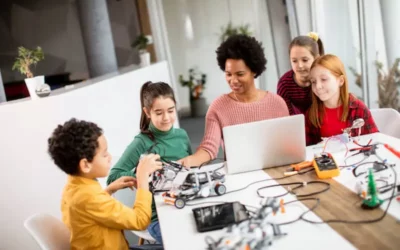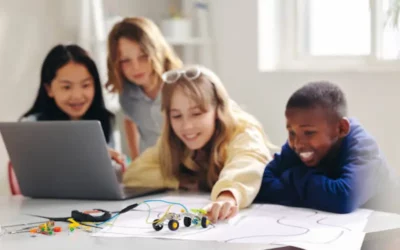Simple Robotics for Kids is a fun and educational way for children to explore the world of robots through age-appropriate activities, allowing them to learn basic robotics concepts and develop problem-solving skills in an engaging and accessible manner. Robots are becoming fantastic tools for teaching kids. They make learning fun and exciting, like having a cool friend to explore with. This hands-on approach not only sparks interest in science, technology, engineering, and math (STEM) but also cultivates problem-solving skills, creativity, and logical thinking.
In this blog, we delve into the world of Simple Robotics for Kids, exploring how this educational approach ignites young minds with the wonders of technology, nurturing creativity and problem-solving skills while making learning an exciting adventure.
Table of contents
The Benefits of Simple Robotics for Kids
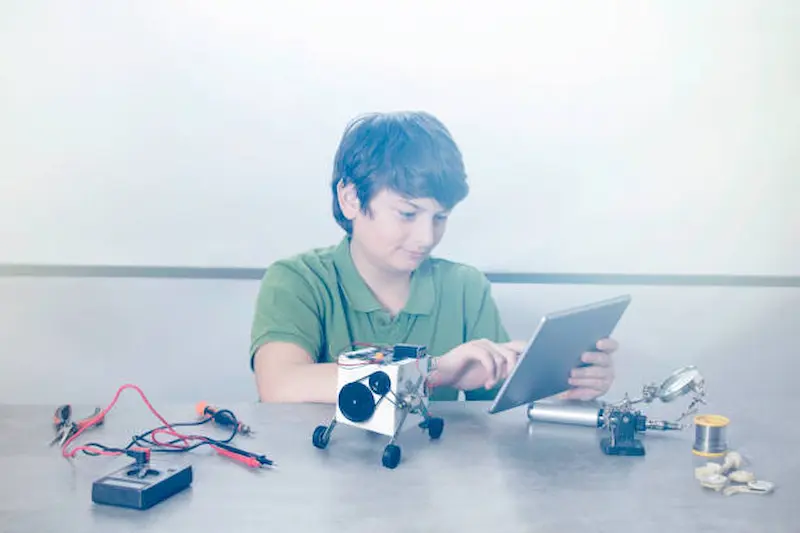
A. Enhancing Critical Thinking Skills:
Simple robotics is like a fun brain workout, promoting the development of critical thinking skills for kids. As they engage in robotics activities, children learn to think logically and solve tricky problems. They have to plan and program robots to complete cool tasks, such as solving exciting mysteries. This hands-on experience not only fosters their enthusiasm for technology but also equips them with valuable problem-solving abilities that extend to their schoolwork and everyday life.
B. Fostering Creativity and Imagination:
With robots, kids become little inventors. They can design robots that look and move in unique ways, letting their creativity run wild. It’s like bringing their wildest ideas to life and making their own robot friends.
C. Developing Problem-Solving Abilities:
Robotics for kids is an engaging way to instill important life skills. Robots sometimes act stubborn, and kids have to figure out why. This teaches them to be patient and persistent problem solvers, a valuable trait in both robotics and life.
They learn that making mistakes is okay because it’s part of learning and improving, fostering a growth mindset that extends beyond robotics for kids and into various aspects of their education and personal development.
D. Promoting Teamwork and Collaboration:
Robotics is a team sport as well as a solo endeavor. Kids can collaborate with their peers, sharing ideas and assisting one another in the construction of beautiful robots. It’s like playing sports, except with robots! Learning to work together is an important life skill.
Getting Started with Simple Robotics
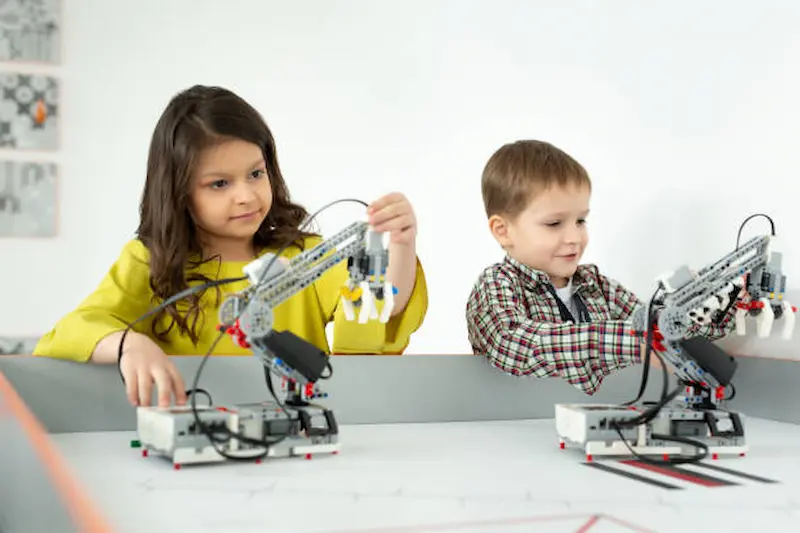
A. Choosing Age-Appropriate Robotics Kits:
The first step in introducing robotics to your child is selecting the appropriate robotics kit for kids based on their age and skill level. There are kits designed for younger children with simpler parts and instructions, while older kids can handle more advanced kits. Starting with a kit that matches their age and skills ensures that the learning process is enjoyable and engaging.
B. Safety Precautions for Kids and Robots:
Safety is super important. Teach kids to handle robotics components carefully. Child safety tips are paramount when introducing kids to robotics. Some parts might have sharp edges or small pieces, so it’s essential to follow safety guidelines.
Also, ensure they know how to safely use any tools involved, like screwdrivers or pliers. Always supervise when needed, especially with younger children.
C. Setting Up the Robotics Workspace:
Create a special place for robotics fun. It should be well-lit, clutter-free, and have a flat surface for building robots. Make sure there’s easy access to power outlets for charging. Having a dedicated space helps kids focus and enjoy their robot adventures even more.
By following these steps, you can kickstart your child’s exciting journey into the world of simple robotics while keeping them safe and engaged in a fun and educational hobby.
Building Blocks of Simple Robotics
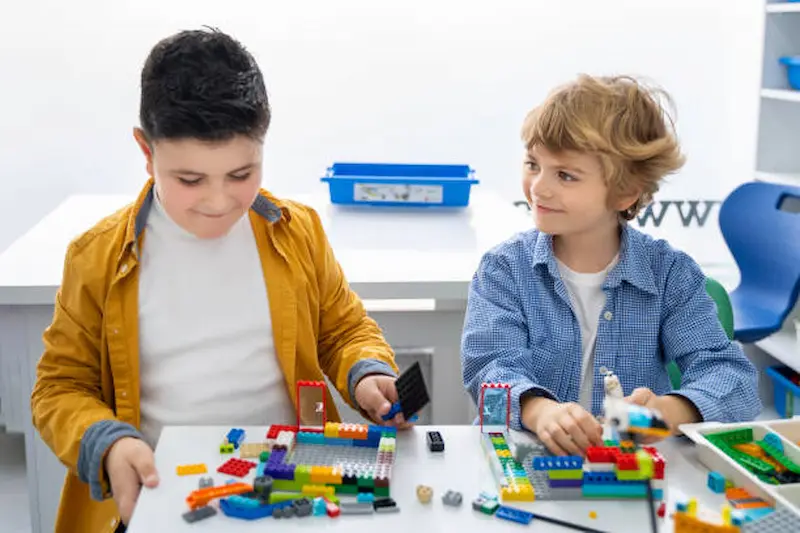
There are three main building components in the field of simple robotics that make it all come to life:
- Components: Consider these to be the robot’s body parts. Wheels are used for mobility, sensors for sensing, and motors to make things happen. Each component, such as our hands, eyes, and legs, has a specific purpose.
- Programming: This is where the magic takes place. It’s the same as telling the robot what to do. To give instructions, children can use special software or codes (such as secret robot language). They can cause the robot to move, light up, or produce amusing sounds.
- Creativity: This is the exciting part! Children have complete control over the appearance and personality of their robot. They have the option of selecting colors, forms, and embellishments. They can choose whether their robot will be a helpful companion, a dance star, or an adventurer. It’s like making a new friend with their own distinct personality.
These building bricks are similar to tools found in a treasure chest. Kids may use them to bring their robot ideas to life, learn about technology, and have fun while doing so. It’s a fun experience in the robot world!
Programming Simple Robots
A. Introduction to Coding for Kids:
Introducing children to coding through coding classes for kids is a fantastic way to nurture their problem-solving skills and creativity. Start with block-based languages like Scratch to make coding accessible and fun, providing an engaging entry point to programming. Teach them fundamental concepts like loops and conditionals through interactive games and animations.
B. Coding Platforms and Languages:
Choose the right coding platform and language for kids. Scratch and Blockly are excellent for beginners, providing a visual and interactive way to learn coding fundamentals. Python for kids is another great choice; it’s versatile, widely used, and offers a smooth transition to more complex coding languages. Consider hardware platforms like Raspberry Pi or Arduino to bring coding into the physical world, allowing kids to control lights, sensors, and simple robots.
C. Creating Simple Robot Behaviors:
Engage kids in both robotics and coding for kids by having them design simple robot behaviors. Start with basic commands like moving forward, turning, and detecting obstacles. Gradually, they can advance to more complex tasks like line following and remote control, fostering a lifelong passion for robotics and coding.
Playful Learning Activities

A. Robot Races and Challenges:
Organize robot races and challenges to make learning engaging. Encourage kids to code their robots to navigate obstacle courses or compete in speed trials. These activities enhance problem-solving skills, encourage healthy competition, and promote teamwork among participants.
B. Storytelling with Robots:
Combine technology and creativity by having children use robots to tell stories and engage in story for kids activities. They can program robots to act out scenes or create characters, turning coding into a storytelling tool. This activity fosters imagination, communication skills, and the ability to script and execute ideas effectively.
C. Exploring Science and Math Concepts:
Robots offer a hands-on way to explore science and math concepts, making it engaging and accessible for science for kids.
Have kids build robots that demonstrate principles like simple machines, angles, and measurements. This sparks curiosity and deepens understanding of these subjects.
D. Art and Design Projects with Robots:
Merge art and technology by incorporating robots into design projects and art projects for kids. Encourage kids to build robots that create unique artwork, fostering innovation and showing how robotics can be applied to various creative endeavors.
Beyond the Basics: DIY Projects for Kids
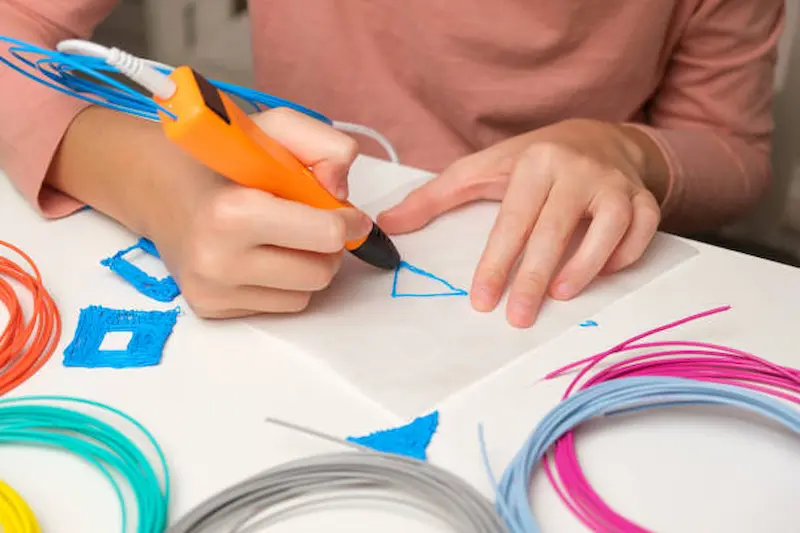
A. Building Custom Robot Designs:
Once youngsters have mastered robotics, they can take it to the next level. They develop into robot artists, creating one-of-a-kind robots, and blending technology with art for kids. They can customize the shapes, colors, and features to their hearts’ content, making each robot unique and distinctive.
B. Integrating Robotics into School Projects:
Robots serve as covert weapons for school projects. Kids may utilize robots or engage in robotics projects for kids to give a fun and engaging touch to any presentation, whether it’s a scientific presentation or a history report. It’s not just about learning; it’s also about making learning fun!
C. Showcasing Robotic Creations:
Children might be proud of their robotic creations. They can have robot exhibitions or make movies to promote their innovations with their friends, family, and the rest of the globe. It’s your time to shine in robotics and inspire others to join the robot adventure!
Nurturing a Lifelong Interest in Robotics
Fostering a lifelong interest in robotics begins with hands-on experiences in childhood. Encouraging children to explore, build, and program robots not only cultivates essential STEM skills but also ignites their curiosity and passion for technology. These early encounters, often through STEM activities for elementary students, lay the foundation for future innovation and problem-solving, ensuring that the next generation remains enthusiastic about robotics and its endless possibilities.
Investing in their robotics education today paves the way for a brighter, more technologically advanced tomorrow.
Conclusion
Simple robotics for kids involves introducing young learners to the exciting world of robotics through accessible, age-appropriate activities. It typically employs user-friendly platforms like LEGO Mindstorms or Scratch, allowing children to build and program basic robots. It nurtures problem-solving skills, enhances creativity, and encourages critical thinking. Kids gain hands-on experience with technology, fostering a deeper understanding of STEM concepts. Furthermore, it promotes teamwork and boosts confidence as they see their creations come to life. Simple robotics for kids is a gateway to a brighter future, inspiring them to become the innovators and problem solvers of tomorrow.
To get your hands on more educational and free resources on coding for kids, robotics for kids, financial education for kids, etc., do check out the BrightCHAMPS Page now!
To get your hands on more such educational and free resources on coding, robotics, game development, etc., do check out the Brightchamps Blog Page now!
Frequently Asked Questions ( FAQs )
A1.Simple robotics can be introduced to children as young as five years old, with age-appropriate kits and guidance.
Q2. How can parents or guardians support their children in learning simple robotics?
A2. Parents can support their children by encouraging curiosity, assisting with problem-solving, and exploring robotics resources together.
Q3. What kind of materials or kits are recommended for beginners in this program?
A3. Recommended materials for beginners include a basic robotics kit with components like sensors, motors, and a simple programming interface.
Q4. Can you provide an example of a simple robotics project that kids will work on?
A4. An example project could be building a robot that follows a line using sensors to navigate a track.
Q5. How can robotics benefit my child’s education?
A5. Robotics enhances problem-solving, critical thinking, and creativity. It also provides a hands-on understanding of STEM concepts, which can be valuable in school.


 We are an army of educators and passionate learners from BrightChamps family, committed to providing free learning resources to kids, parents & students.
We are an army of educators and passionate learners from BrightChamps family, committed to providing free learning resources to kids, parents & students.




